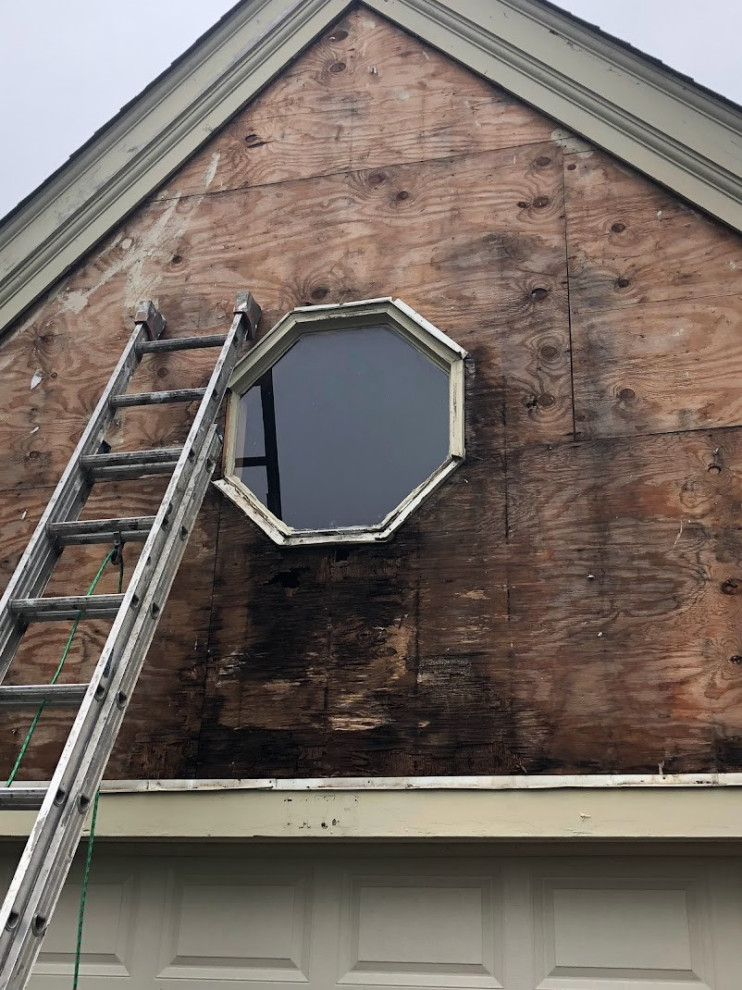Spring Cleaning for Your Home's Health: Why Inspecting for Wood Rot is Critical

As the snow melts and the days grow longer, it's time to welcome spring with open arms. And what better way to kick off a fresh new season than by giving your home a deep clean? But while sweeping away dust bunnies and wiping down surfaces, remember one crucial step: inspecting for wood rot. This common problem can wreak havoc on your home's health and safety, so addressing it as soon as possible is critical. In this post, we'll explore why checking for wood rot should be at the top of your spring cleaning checklist – and how you can prevent this pesky issue from causing damage in the future. So grab your gloves, and let's get started!
By inspecting for wood rot during your spring cleaning session, you'll be able to spot any potential problems early on and address them before they become serious issues. Plus, you'll have peace of mind knowing that your home is safe and healthy for you and your family. So as you tackle your spring cleaning list, add this critical step to ensure your home stays strong for years to come!
What is Wood Rot?
Wood rot is a type of fungus that can degrade wood and weaken its structural integrity. As a result, it often resembles discolored or soft spots on your walls, floors, and other wooden areas. But even if you don't notice any visible signs, there may be internal damage caused by the fungus that could lead to further problems. When neglected, wood rot can cause extreme instability to your home's structural framework, resulting in costly repairs or even collapse. It also creates an environment where mold and mildew thrive, leading to potential health issues for anyone inside the home.
Dry vs Wet Wood Rot
When it comes to wood rot, there are two main types: dry and wet. Dry rot is caused by a fungus that breaks down the cellulose in wood, which can lead to the wood becoming brittle and crumbly. Wet rot, on the other hand, is caused by bacteria that thrive in damp conditions. This type of rot can cause the wood to swell and break down, eventually leading to structural damage.
So, how can you tell the difference between dry and wet rot? Here are a few key indicators:
Dry Rot
- Wood that is dark in color or has a powdery texture
- A musty smell
- Cracks or splits in the wood
- Brittle or crumbly wood
Wet Rot
- Wood that is soft or spongy to the touch
- A damp or musty smell
- Swelling or warping of the wood
Locate Wood Rot
As the weather warms up and you start to think about spring cleaning, remember to inspect your home for wood rot. Wood rot is a severe problem that can cause structural damage to your home if left untreated.
There are a few things you can do to locate wood rot in your home:
- Inspect any areas of your home exposed to the elements, such as decks, porches, and balconies. Look for signs of decay, such as crumbling wood or discoloration.
- Check for water leaks inside your home, which can lead to wood rot. Pay close attention to windows, doors, plumbing fixtures, and pipes.
- Look for signs of insects or animals. These pests can cause extensive damage to wood structures.
If you suspect that there is wood rot present in your home, it's essential to have it inspected by a professional as soon as possible. Wood rot can spread quickly and cause significant damage, so it's best to catch it early.
Identify Wood Rot
Wood rot is one of the most common problems that homeowners face. Not only is it unsightly, but it can also lead to serious structural issues if left untreated. The good news is that wood rot is relatively easy to identify. Here are a few signs that you should look for:
-Discoloration: Wood rot typically starts as a small, dark spot on the wood surface. The discoloration will spread as it progresses, and the wood may take on a fuzzy or powdery appearance.
-Softness: If you press your finger into the wood and it feels soft or spongy, this is another sign of wood rot.
-Cracks and splits: As wood rots, it will become weaker and more vulnerable to cracking and splitting.
-Mold and mildew: Wood rot often goes hand-in-hand with mold and mildew growth. If you see any mold or mildew on the affected area, this is a sure sign of wood rot.
Wood Rot Repair
If you have wood rot in your home, it's important to repair it immediately. Wood rot can cause severe structural damage to your home and be a health hazard.
There are several ways to repair wood rot, but the most important thing is removing all the affected wood. Once you've removed the rotten wood, you can replace it with new wood or seal the area to prevent further damage.
If you're repairing wood, rot yourself, be sure to wear gloves and a mask to protect yourself from dust and debris. You should also avoid spreading the rot to other parts of your home. If you need assistance identifying and treating wood rot, don't hesitate to contact Cavallo Contracting. With over 20 years of experience, our team specializes in interior/exterior carpentry and painting. We are happy to help.
